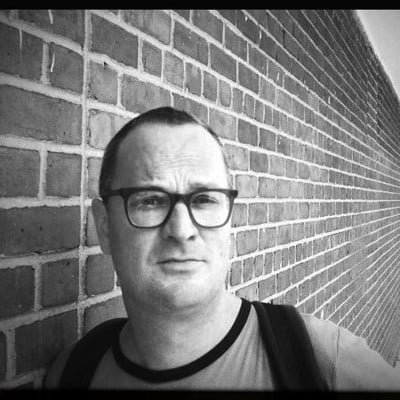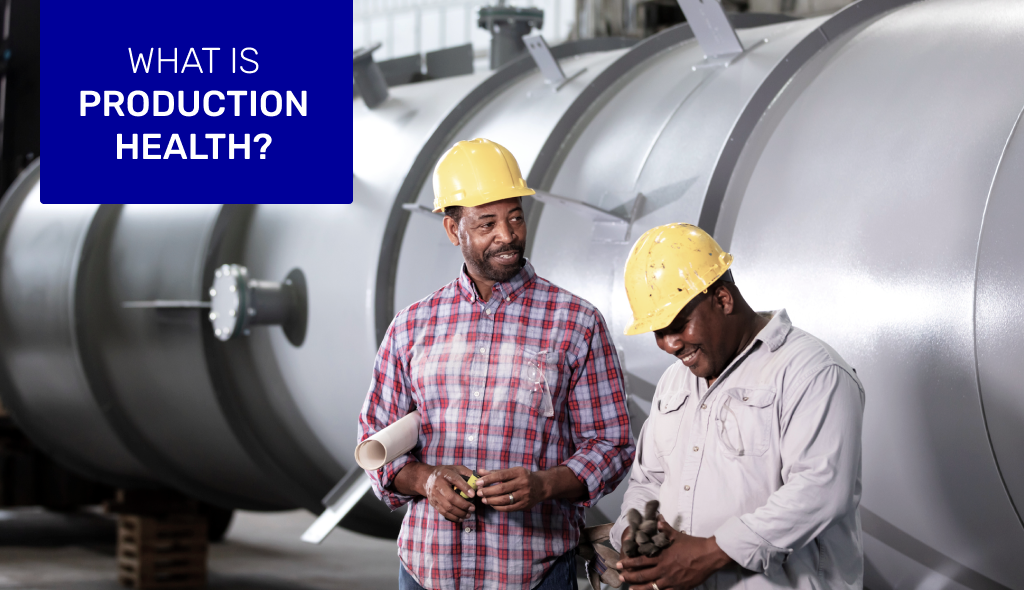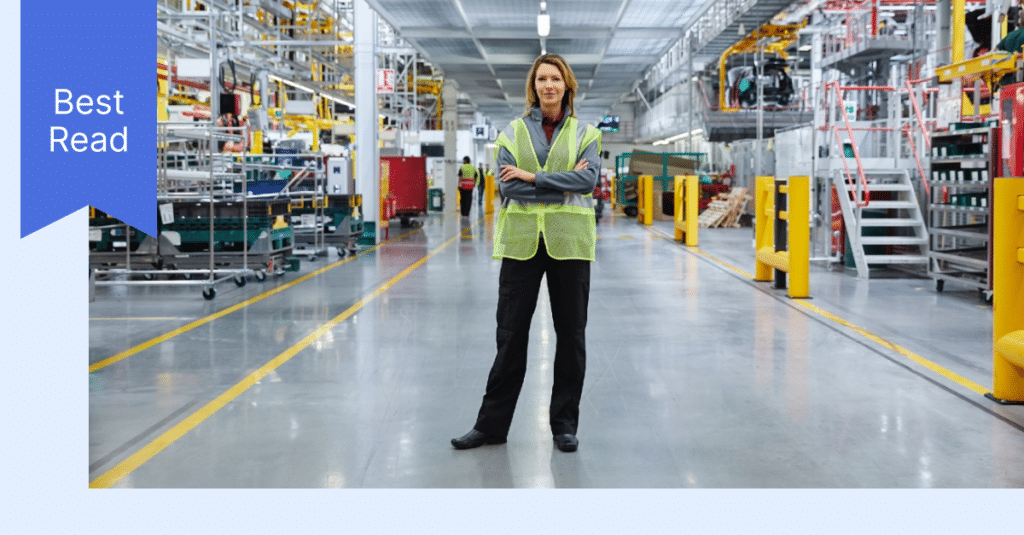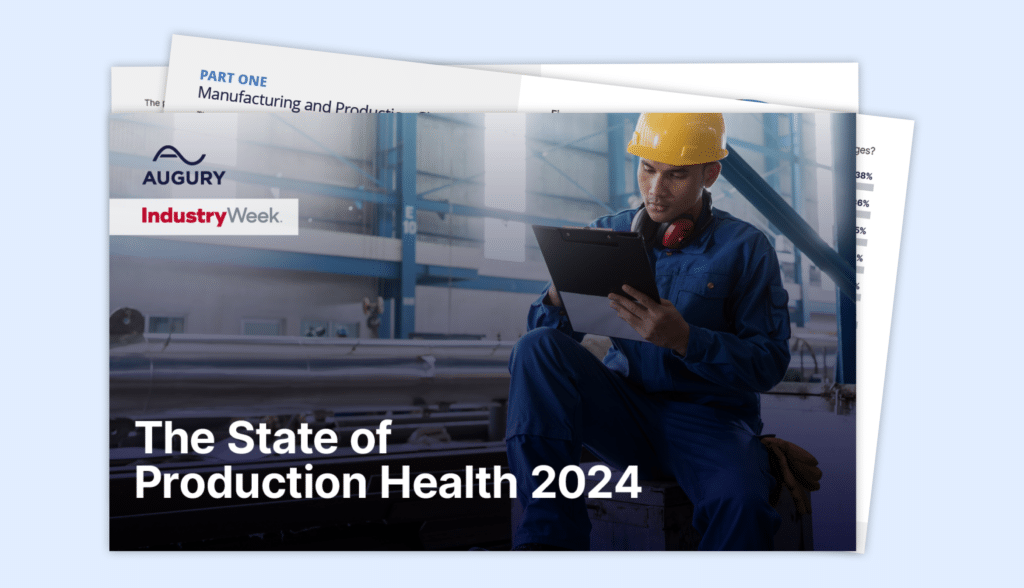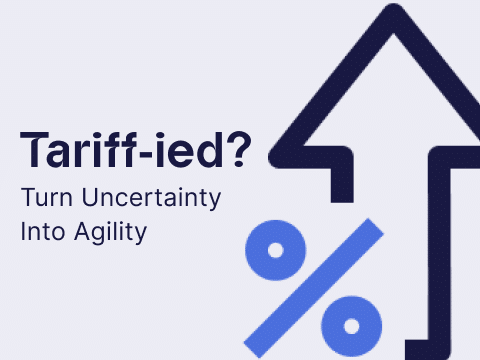As a Solutions Architect at Augury, Clifton Green describes his job as “making sure that we do what we say we can do.” As is fitting, Clifton is very much hands-on and boots-on-the-floor with a strong background as an Engineering & Maintenance Manager. “At the end of the day, I need to see tangible results. That’s where I get my job satisfaction. That’s the root of the passion I have for my profession,” says Clifton.
In short, Clifton is the perfect person to talk with in this ongoing series ‘What is Production Health?’ on what it will mean for the factory floor as we seek to continually boost “situational awareness” as we strive for full Production Health – making Maintenance & Operations teams unite in the process.
Read: ‘Roadmap To The Future:
Machine Health + Process Health = Production Health’
From Doubter To Champion
How do you describe your job to those outside the manufacturing industry?
In terms of my overall career, I make sure complex, and often unique, machinery keeps producing what they are meant to be producing. At the end of the day, everything’s a motor. Everything’s a gearbox. As long as something is rotating, we need to monitor it. The rest is details: What’s going through it and what’s it making? It’s not very different than with humans. Everybody’s got things like legs and arms – we’re a collection of all these unique traits that make you you. Machinery is not that different.
Nice! You were first introduced to Augury as a customer. How did you experience that?
I was working at a large manufacturer where I was originally brought in to modernize their maintenance side. I first began at one of their key plants but it quickly turned into covering the company’s whole reliability network. Along with two other guys – a Senior VP and a Senior Director – I was tasked with finding a predictive maintenance solution. And I was the only guy with any vibration analysis experience. In the end, we talked to about 13 different companies, and I was convinced we had seen every solution on the market
But then Augury showed up. I found the sales pitch wildly unbelievable. It was like a fever dream that came to life – something we could only have wished existed. After we gave the sales guy some data around some of our key values like run-time and downtime hours, he came back with an incredible return-on-investment number. I phoned the Senior VP and told him that I thought this sales guy was full of horse doo-doo – that he was just throwing numbers at us so we’d buy it. Later, they sent Brian Richmond out to my office to convince me it was feasible. And the rest is history.
We did three pilot sites with the plan of rolling it out after a year if these were successful. But after two months, we just decided not to waste time and put it everywhere. It changed everything: we could plan everything instead of just fighting fires as they came up.
And a couple of months after that, when I already had one foot out of the door of this company, I called Brian to say, “If you’re hiring let me know, because I need to work there.”
The Next Leap Forward
So, you moved from being detractor, to promoter, to joining the team. That’s a beautiful story.
So that all happened via Augury’s Machine Health Solution. What’s your take as someone from the floor, now as we aim for full Production Health?
I think it represents the next leap forward. In the 1960s, the technology was very similar to flicking a light switch – on or off. Then somewhere in the 1980s or 90s, with PLCs and SCADA control systems, things changed in manufacturing in the same way having a PC in your home revolutionized the way people lived. And the next great leap is going to be this combination of AI and looking at Machine Health, and what we are calling Process Health.
On one level it’s about bringing together operations and maintenance: whereby everybody gets to understand everybody better – in understanding what the overall challenges are. It’s also a way to confront the shrinking workforce. We’re already seeing that a lot of manufacturers are starting to turn their operators into maintenance people – so-called Op-Techs. And the next step is to have informed operators who can interact with the Augury platforms and deal with status changes as they come up.
And that’s when the sky truly becomes the limit?
While the potential applications are indeed staggering, it’s hard to say how it will exactly play out and on what timeline. It’s a question of how you come up with a solution that not only maintains your effectiveness, but it increases your reliability. At the end of the day, everything comes down to situational awareness: you need to be able to know the status of your machinery and your process. And based on that, you can increase your ability to plan: knowing what to fix when it needs to be fixed, or getting something cleaned when it really needs to be cleaned. And knowing how many people you need to fix it or clean it. You certainly won’t need to have, say, 12 full-time maintenance people sitting around because they don’t have enough to do – until, that is, something breaks.
It’s also about no longer discovering the drop in quality at the back-end and having to throw away all the product, but seeing this at the front-end and being able to fix it before it gets so far. If you know it at the front-end, it affects everything: it affects the way you run your machinery, it affects the way you’re making product.
A Call-Out For Partners In Innovation
In terms of Production Health, what’s the most important thing our customers should know?
Number one, we need to find the right customers who understand what they are good at and what we are good at. And Augury is a reliability company that has fantastic state-of-the-art AI. And we need to find more companies that understand their strengths so we can be a force multiplier in confronting their challenges.
At the end of the day, the message to get out there is this is uncharted territory. We need partners to dive in headfirst with us and together figure out the potential. We know it’s groundbreaking and it will change the way people do business. But we need people that are interested and motivated in figuring out that next step and then go there with us. Already, we have customers who are willing to pay us to figure out their problems. What we want is more customers who look at the potential of what we can offer, get excited, see all these places where it can be used, and assign a team to do it. We need to find more partners like that.
Learn more about Augury’s vision of Production Health here
Or reach out and talk with us directly.
